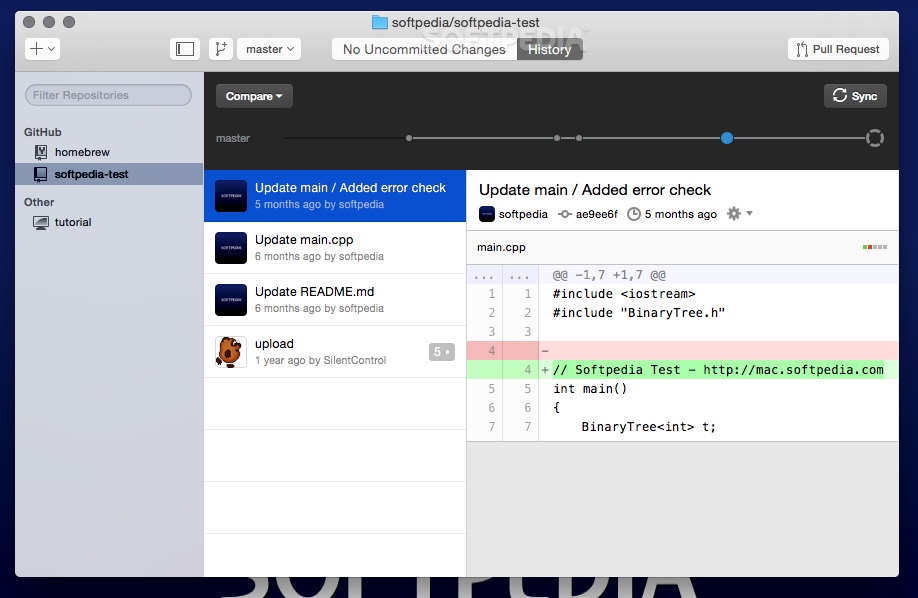

As Palamountain says, “Then we started to share a piece of code that we called the comparison graph, which sits at the very top of the app and lets you navigate between your current branch and the master branch, viewing commits and navigating through your history and performing merges.” In this first release that’s been a focus on developing tooling to make it easier to see changes in your code. “What our users need is a way to collaborate on GitHub, so we focused on that as a single team, working on parity between clients.”Ī single team working on a cross-platform application makes a lot of sense, as it allows ideas to be shared and lets the team focus on key cross-platform elements. With a focus on Git as a protocol, rather than GitHub as a service, it meant that key use cases weren’t being addressed, especially around collaboration. “We originally had two different teams, making two different Git clients,” Palamountain told me. The move to a new client was initially driven by a change in application strategy and a need to consolidate code. To learn more, I spoke to GitHub’s Amy Palamountain, part of the company’s Desktop Engineering team.

It’s interesting to understand how GitHub built a cross-platform application like this.

Or you could simply use GitHub Desktop to monitor the Git tooling built into your IDE. As the client is connected to the cloud service, it keeps up to date with changes in all the branches, showing where pull requests have been made and where commits in the master branch haven’t yet been merged into your current branch.Ĭommits and pull requests are handled just like you're used to with GitHub, with file system integration so that you can use your choice of editors and development tools. A drop-down menu lets you pick a branch, with the graph showing the commits since you last branched off. Looking rather like a public transport map, it gives you a view of your current branch and the commits you’ve made. The tutorial is built into the app and can be hidden at any time.Īt the heart of the tool is a graphical view of a repository, showing the branches and differences, that helps you navigate through your and your collaborators' changes.
Github desktop tutorial how to#
Once installed it walks you through a quick tutorial showing you how to branch a repository, commit changes, then handle pull requests and merges.
Github desktop tutorial install#
It handles synchronizing your code with the cloud, managing branches, and showing changes - so you can work in your usual code editors without having to worry about whether it has integration plug-ins.Īcquiring GitHub Desktop is quick and easy, with the installer downloading the latest version as part of the install process. With both Mac and Windows versions, built using a common core, it’s an important tool. GitHub Desktop is intended to simplify working with the service, bringing common GitFlow techniques to your desktop while still giving you an offline copy of your repositories so that you can work anywhere.
Github desktop tutorial software#
Git’s cloud incarnation, GitHub, has become the public face of source control - where recruiters look at candidates’ code and commits and where much of the world’s open source software is developed and shared. From its birth of scratching Linus Torvalds’ version-control itch, it has grown to become the repository of choice. Git has become the lingua franca of code.


 0 kommentar(er)
0 kommentar(er)
